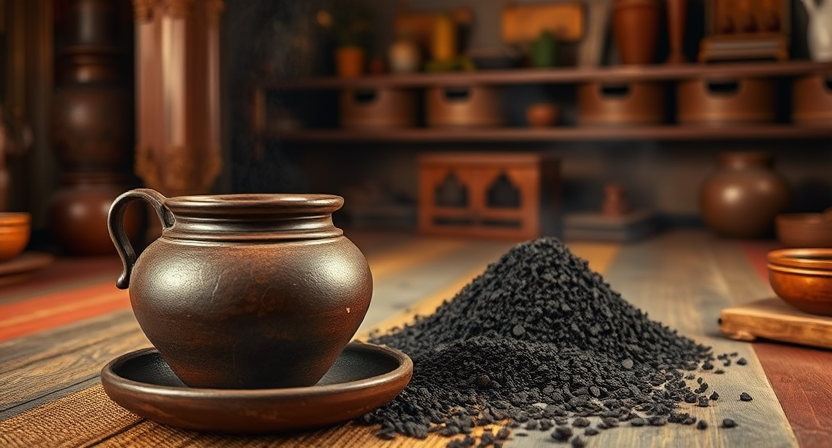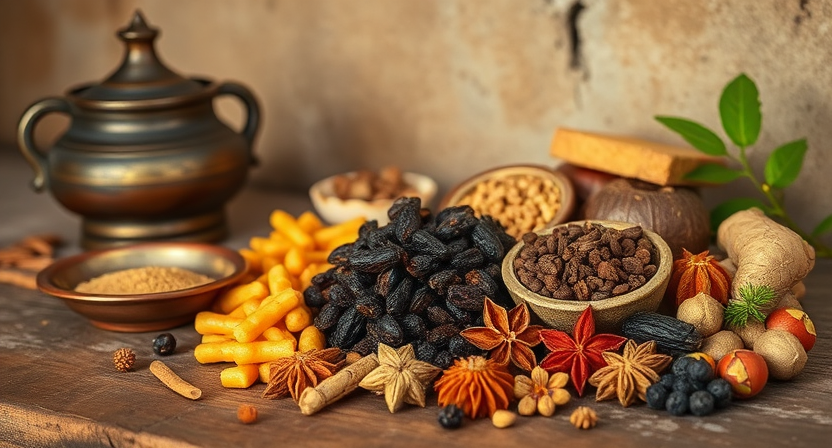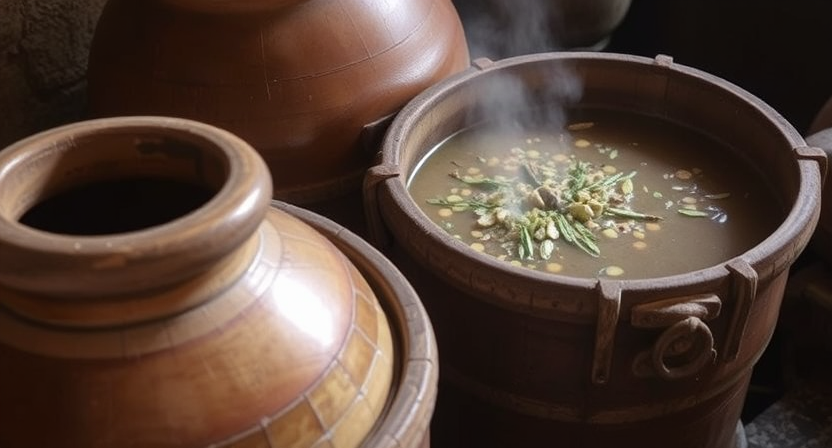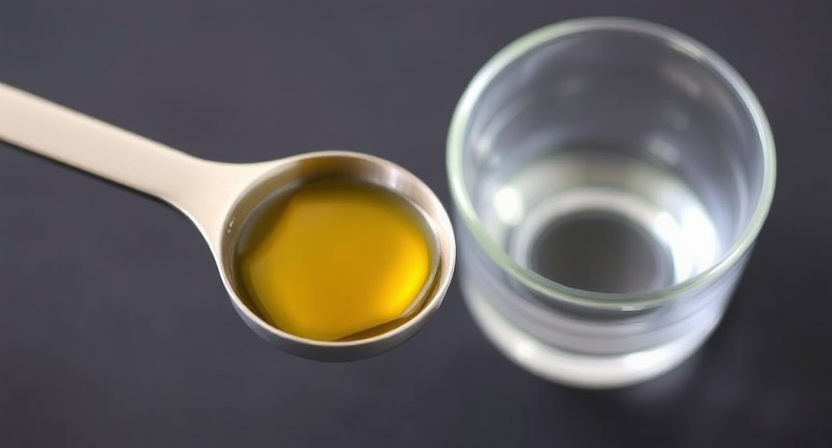Ayaskriti: Introduction
Ayaskriti, a traditional Ayurvedic liquid formulation, occupies a unique space in the realm of herbal medicines within the ancient Indian system of medicine. Classified as an asava, it is a self-generated alcoholic preparation made through a process of fermentation. This particular formulation is primarily known for its hematinic properties, traditionally used to address anemia and related conditions. Ayaskriti is not a simple herbal mixture.

it represents a sophisticated blend of natural ingredients, carefully selected and combined to achieve specific therapeutic objectives. This article will delve into the intricacies of Ayaskriti, covering its composition, traditional applications, dosage guidelines, potential side effects, necessary precautions, and any relevant modern insights. The aim is to provide a balanced view informed by both traditional understanding and contemporary perspectives.
Table of Contents
Ingredients: The Components of Ayaskriti
Ayaskriti is a complex formulation consisting of various herbs, spices, and other natural components, each contributing specific therapeutic properties. Here is a detailed breakdown of its main ingredients, along with their common names, botanical names, and their traditional Ayurvedic properties:

| Ingredient (Common Name) | Botanical Name | Ayurvedic Properties (Rasa, Guna, Virya, Vipaka) | Purported Role in Formulation |
| Loha Bhasma (Iron Ash) | Ferric oxide | Kashaya, Madhura, Sheeta, Laghu, Madhura | Primary iron source, hematinic, strengthens tissues |
| Gud (Jaggery) | Saccharum officinarum | Madhura, Guru, Ushna, Madhura | Sweetening agent, base for fermentation, provides energy |
| Draksha (Raisins) | Vitis vinifera | Madhura, Guru, Sheeta, Madhura | Base for fermentation, nutritive, improves palatability |
| Dhataki Flower | Woodfordia fruticosa | Kashaya, Ruksha, Sheeta, Katu | Facilitates fermentation, imparts color, contains tannins |
| Trikatu (Ginger, Black Pepper, Long Pepper) | Zingiber officinale, Piper nigrum, Piper longum | Katu, Ushna, Laghu, Katu | Digestive, carminative, enhances bioavailability of other herbs |
| Chitraka (Leadwort) | Plumbago zeylanica | Katu, Ushna, Ruksha, Katu | Digestive, carminative, improves appetite |
| Vidanga (Embelia) | Embelia ribes | Katu, Ushna, Laghu, Katu | Anthelmintic, digestive |
| Musta (Nutgrass) | Cyperus rotundus | Katu, Tikta, Ruksha, Sheeta, Katu | Digestive, carminative, anti-inflammatory |
| Haritaki (Chebulic Myrobalan) | Terminalia chebula | Tikta, Kashaya, Ruksha, Ushna, Madhura | Digestive, laxative, detoxifier, rejuvenative |
| Bibhitaki (Belleric Myrobalan) | Terminalia bellirica | Kashaya, Tikta, Ruksha, Ushna, Madhura | Digestive, expectorant, rejuvenative |
| Amalaki (Indian Gooseberry) | Emblica officinalis | Amla, Madhura, Sheeta, Laghu, Madhura | Rich in Vitamin C, antioxidant, rejuvenative, enhances iron absorption |
| Shunthi (Dry Ginger) | Zingiber officinale | Katu, Ushna, Guru, Madhura | Digestive, carminative, anti-inflammatory |
| Maricha (Black Pepper) | Piper nigrum | Katu, Ushna, Laghu, Katu | Digestive, enhances bioavailability of other herbs |
| Pippali (Long Pepper) | Piper longum | Katu, Ushna, Guru, Madhura | Digestive, carminative, expectorant |
| Ela (Cardamom) | Elettaria cardamomum | Madhura, Laghu, Sheeta, Madhura | Digestive, carminative, improves taste |
| Tejpatra (Bay Leaf) | Cinnamomum tamala | Katu, Ushna, Laghu, Katu | Digestive, carminative, anti-inflammatory |
| Twak (Cinnamon) | Cinnamomum zeylanicum | Katu, Madhura, Ushna, Katu | Digestive, carminative, improves circulation |
| Nagkesar (Mesua ferrea) | Mesua ferrea | Tikta, Kashaya, Laghu, Ushna, Katu | Astringent, anti-inflammatory, reduces excessive bleeding |
Understanding Ayurvedic Properties
The Ayurvedic properties (Rasa, Guna, Virya, and Vipaka) are key to comprehending the action of each ingredient and the overall formulation of Ayaskriti:
- Rasa (Taste): The basic taste, such as Madhura (sweet), Katu (pungent), Tikta (bitter), Kashaya (astringent), Amla (sour), or Lavana (salty).
- Guna (Qualities): Describes attributes like Guru (heavy), Laghu (light), Sheeta (cold), Ushna (hot), Ruksha (dry), or Snigdha (unctuous).
- Virya (Potency): The heating or cooling effect of an ingredient on the body.
- Vipaka (Post-Digestive Effect): The taste that arises after digestion – Madhura, Amla, or Katu.
The specific combination of these properties in Ayaskriti works to balance doshas, particularly Pitta and Kapha, while promoting iron absorption, enhancing digestive function, and improving overall health. The goal is to improve Rakta dhatu (blood tissue) and enhance strength and vitality.
Source and Quality of Ingredients
The therapeutic efficacy of Ayaskriti is significantly dependent on the quality of its raw materials. Traditionally, herbs are sourced from their natural habitats, harvested at the optimum time for maximum potency. In modern practice, many manufacturers utilize cultivated herbs, which can be equally effective if managed correctly. It is important to ensure the source and authenticity of the jaggery, raisins and dhataki flowers and to avoid any adulteration of these ingredients. It is important to source these ingredients from reputed vendors, and to ensure that the manufacturing process adheres to quality control standards to ensure the authenticity and potency of this formulation.
Traditional Uses of Ayaskriti
Ayurvedic texts, including the Bhaishajya Ratnavali and Charaka Samhita, document the traditional uses of Ayaskriti. It is primarily known for its ability to:

- Treat Anemia: Due to the presence of Loha Bhasma (Iron Ash), it’s primarily used to manage and treat various forms of anemia by replenishing iron stores and supporting red blood cell production.
- Improve Hemoglobin Levels: It increases hemoglobin levels, thereby improving oxygen carrying capacity of the blood, thereby improving energy levels in patients.
- Enhance Digestion: The combined effect of the digestive herbs stimulates digestive enzymes, improves appetite, reduces bloating and gas and thus helps enhance digestion.
- Reduce Weakness and Fatigue: By improving blood parameters and supporting better digestion, it reduces weakness, fatigue, and overall lassitude.
- Improve Overall Strength and Stamina: It helps in improving overall strength, vitality, and stamina, and supports well-being.
- Support Postpartum Care: It is also used as a tonic in the postpartum period to promote overall recovery and replenish iron reserves.
Ayaskriti is traditionally prescribed as a supportive remedy for patients with anemia and other blood-related disorders, and is helpful during convalescence.
Primary vs. Secondary Uses
The primary focus of Ayaskriti is on treating anemia and improving blood parameters. Its use as a digestive aid, tonic for strength and energy, and for postpartum care can be considered as secondary benefits.
Modern Perspectives: Limited Scientific Evidence
While Ayaskriti has a long history of use in traditional Ayurveda, there’s limited modern scientific research on the combined effects of the formulation as a whole. However, Loha Bhasma has been studied for its hematinic properties. Individual ingredients such as Amalaki and Haritaki have antioxidant and digestive properties.
Further research is required to validate its traditional uses and to determine the mechanism of action of the formulation. Much of the existing information is derived from anecdotal evidence and the traditional understanding of Ayurveda.
Preparation Methods

- Infusion: The herbs and spices are ground and mixed with jaggery, raisins, and water.
- Fermentation: The mixture is transferred to a suitable vessel where it undergoes natural fermentation, dhataki flowers are added as a fermenting agent.
- Maturation: The formulation is left for a specific period of time to allow the ingredients to release their active components.
- Straining and Bottling: After fermentation, the mixture is strained, filtered, and bottled for use.
- Quality Checks: Standard procedures are adhered to by commercial manufacturers to ensure the quality of finished product.
This process yields a self-generated alcoholic liquid with the therapeutic properties of its combined ingredients. Due to limited information available regarding proprietary manufacturing process, the above mentioned is generalized information of making asavas.
Dosage Guidelines
Dosage recommendations for Ayaskriti are typically based on the age, body constitution (Prakriti), the health condition being addressed, and the digestive strength of the individual. General guidelines include:

- Adults: 10 to 20 ml (2-4 teaspoons) twice daily after meals, or as directed by an Ayurvedic practitioner.
- Children: It should be used with caution in children and the dose should be significantly reduced and only under the supervision of a qualified practitioner.
- Specific Conditions: The dose may need to be altered as per the patient’s constitution, symptoms and severity of anemia, along with digestion.
Importance of Prakriti
Ayurvedic principles stress individual differences. Prakriti plays an important role in determining appropriate dosage. Those with Pitta may need lower doses as some ingredients are heating in nature, whereas Kapha may require higher dosages depending on the severity of the condition.
Dosage Forms
Ayaskriti is typically available as a liquid for oral consumption. It can be consumed directly or diluted with a small amount of water. Some manufacturers may also offer it in capsule form. You can Check out here
Side Effects and Precautions
While generally considered safe when used correctly, Ayaskriti can have potential side effects and requires certain precautions:

- Digestive Upset: Overconsumption may cause mild digestive disturbances or heartburn.
- Alcohol Content: Due to the fermentation process, it contains alcohol which may be a concern for some.
- Allergic Reactions: Allergic reactions to any of the ingredients are possible.
- Drug Interactions: It may interact with certain medications.
- Contraindications: It is usually avoided in acute gastritis, ulcers and inflammatory conditions of the digestive system.
- Pregnancy and Breastfeeding: It is best avoided during pregnancy and breastfeeding unless specifically advised by a medical practitioner.
The Importance of Professional Consultation
Consulting an Ayurvedic practitioner is essential before starting Ayaskriti, especially if:
- You have existing health conditions, particularly gastro-intestinal disorders.
- You are taking prescription medications.
- You are pregnant or breastfeeding.
- You are unsure about your Prakriti or the appropriate dosage.
A healthcare professional can provide personalized guidance and ensure safe and effective usage.
Quality and Storage

Choose Ayaskriti from reputable manufacturers to ensure product quality. Store it in a cool, dark place, away from direct sunlight and heat, preferably in an airtight glass container. It should be consumed within the expiry date. Check for any changes in color, odor, or taste which might indicate spoilage of the product.
Disclaimer
The information provided in this article is for educational purposes only and should not be considered medical advice. The use of Ayaskriti should be under the guidance of a qualified healthcare professional. Self-treatment can be harmful, particularly for individuals with specific health conditions.
Conclusion
Ayaskriti is a traditional Ayurvedic formulation primarily used for managing anemia and improving blood health. While traditional texts highlight its benefits, it’s essential to approach its use with caution, taking into account possible side effects, contraindications, and its alcohol content. Consulting a qualified Ayurvedic practitioner or healthcare professional before use is of utmost importance. By adhering to these guidelines, one can harness the therapeutic benefits of Ayaskriti responsibly and effectively.
FAQs About Ayaskriti
- What is the use of Ayaskriti?
Ayaskriti is a traditional Ayurvedic formulation primarily used to manage anemia and improve blood health. It helps increase hemoglobin levels, improves iron absorption, reduces weakness and fatigue, and enhances overall strength and vitality. - Which arishta is good for weight loss?
There isn’t one specific arishta solely for weight loss. However, some arishtas like Kanakasava and Punarnavasava might indirectly support weight management due to their effect on metabolism and digestion. But more often, other herbs and formulations are traditionally used for weight loss. - What are the benefits of arishtam?
Arishtas are Ayurvedic formulations that provide a variety of health benefits, depending on their specific herbal composition. They can support digestion, boost immunity, improve energy levels, manage hormonal imbalances, and promote overall well-being. They are used to enhance the effects of the herbal formulations. - What is lodhrasavam used for?
Lodhrasavam is a traditional Ayurvedic formulation primarily used to address gynecological issues, including menstrual irregularities and excessive bleeding. - What is Ashokarishta?
Ashokarishta is an Ayurvedic arishta used primarily for women’s health. It helps regulate menstrual cycles, reduce excessive bleeding, alleviate painful periods, support uterine health, and manage leukorrhea. - Can Ashokarishta stop periods?
Ashokarishta can help regulate periods and reduce excessive bleeding, but it is not intended to stop periods. It addresses underlying hormonal imbalances that may cause menstrual problems. - Can I drink Dasamoolarishtam daily?
Dasamoolarishtam can be consumed daily in recommended doses under the guidance of an Ayurvedic practitioner. It’s traditionally used as a general tonic, and helps enhance digestion and energy levels. - What is the best Ayurvedic for weight loss?
There isn’t one single best Ayurvedic remedy for weight loss. A holistic approach is essential. Triphala, Guggulu, and Medohar Guggulu are traditionally used along with dietary modifications and increased activity. - Which slimming powder is best?
There are many slimming powders available, but it’s best to choose one with natural ingredients, based on your individual constitution. Always consult a healthcare professional before using any of these. - How to reduce belly fat?
Belly fat reduction requires a combination of a healthy diet, regular exercise (cardio and strength training), and stress management. Avoid processed foods, sugary drinks, and incorporate good dietary habits. - What drink burns the most belly fat?
There isn’t a single drink that burns belly fat, however, green tea, jeera water, and other herbal teas are often recommended for their metabolism-boosting properties. - Which medicine is best for losing weight?
There is no “best” medicine for weight loss. Weight loss should be approached with lifestyle modifications, and dietary management under the guidance of a qualified medical practitioner. - How to use Kalijiri for weight loss?
Kalijiri (black cumin) can be used as a powder, or as a tea to support digestive health which can indirectly help in weight management. It is best to seek guidance from a qualified health professional on how to use it safely. - What is the work of Dalchini?
Dalchini (Cinnamon) is used in Ayurvedic medicine to enhance digestion and metabolism and also helps regulate blood sugar levels. It is an antioxidant and helps improve the taste of a formulation. - How to lose fat in 7 days?
Losing fat in 7 days is unrealistic. Fat loss is a gradual process. Focus on consistent healthy eating and exercise. It is recommended to lose weight gradually to maintain the lost weight. - What is the miracle drink for weight loss?
There is no miracle drink for weight loss. Sustained weight loss can be achieved through healthy dietary habits and an active lifestyle. - Does walking burn belly fat?
Yes, walking, particularly brisk walking, can contribute to overall calorie burning and help in reducing belly fat, especially when combined with dietary changes. - What is the no. 1 weight loss drink?
There is no single “#1” weight loss drink. Water is key for weight loss. Green tea and herbal teas are also useful but not as a magic cure. - Is Jeera water good for weight loss?
Jeera water (cumin water) can support weight loss by aiding digestion and boosting metabolism. It is best consumed with a balanced diet and regular exercise. - What drinks burn belly fat in 7 days?
There are no drinks that will magically burn belly fat in 7 days. Focusing on lifestyle changes and eating healthy is better than focusing on a specific drink. - How to lose 5 kg in 10 days?
Losing 5 kg in 10 days is drastic and not recommended. Focus on sustainable weight loss strategies by eating healthy and increasing exercise. Sudden weight loss is often unhealthy. - How to lose weight in 15 days with jeera water?
Jeera water alone will not help with drastic weight loss. Combine it with a healthy, balanced diet, and regular exercise for weight loss. Weight loss is a gradual and consistent process. - Can Saunf reduce weight?
Saunf (fennel) can aid digestion, reduce bloating and may indirectly support weight loss when combined with a healthy lifestyle, but not as a sole agent. - What is the benefits of Sital Chini?
Sital Chini, also known as Cubeb, is traditionally used in Ayurvedic medicine as an expectorant, and to improve digestive health and as a respiratory aid. - What is Chandraprabha gulika used for?
Chandraprabha Gulika is an Ayurvedic formulation used for managing urinary disorders, kidney problems, and overall health. - Can I take Arjuna daily?
Arjuna can be taken daily in recommended doses, but it is best to take it under the guidance of an Ayurvedic practitioner. It’s primarily used for cardiovascular health. - What is mishri good for?
Mishri (rock sugar) is often used as a sweetener in Ayurvedic remedies. It is considered cooling and soothing and also to help with digestion.
